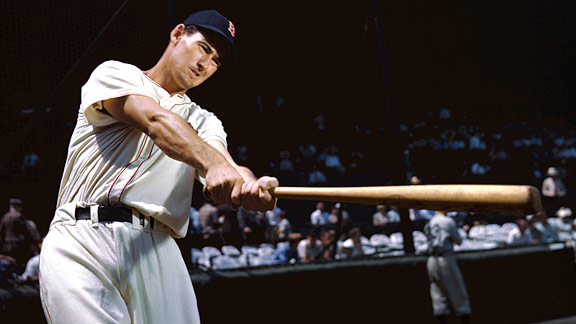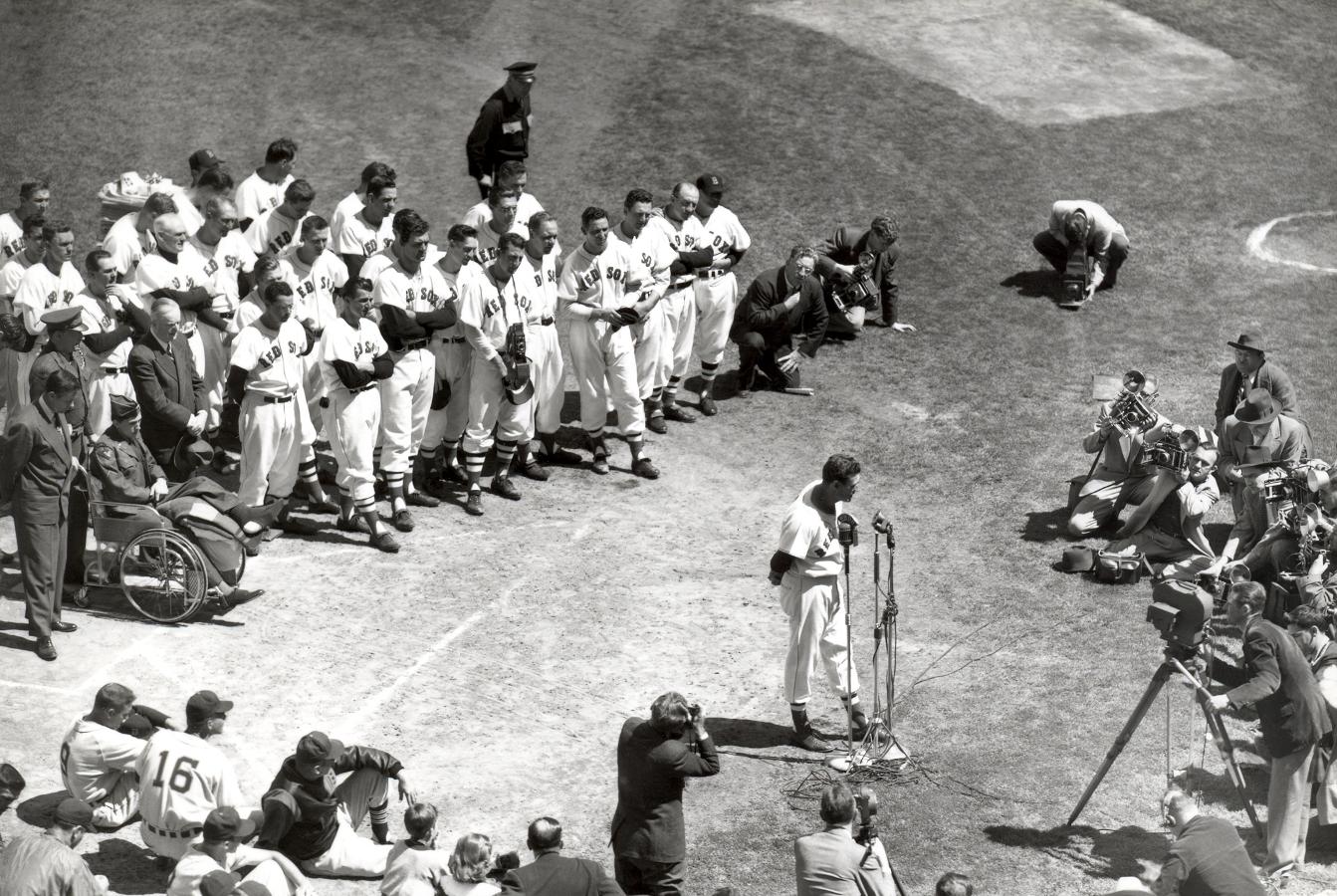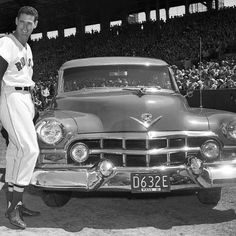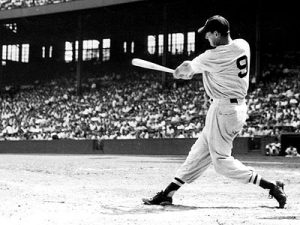American Masters aired a documentary on PBS Monday night to chronicle the life of Ted Williams. The film didn’t introduce any revelations, but they did have new color footage of Ted Williams homering in his final at-bat. Even without bringing anything new to light, the documentary was definitely worth a watch. Scanning film on one of the best hitters of all time and hearing people talk about him will never grow boring.
Playing Days
Ted Williams famously hit .406 in 1941, his third season in the big leagues. The film discussed the famous story of his refusal to sit out the final day of the season. Going into that final day, his average would have finished at .400 if rounded up. Given the option to sit and take the .400, Williams opted to play and proceeded to go 6-8 on the doubleheader, raising his average to .406.
Another famous story, which will never grow old, was when Williams returned from Korea. After not having held a bat in 456 days, Williams took batting practice at Fenway Park upon his return. After a couple line drives, Williams started launching home run after home run. At one point, he homered on 13 consecutive swings. When he returned to the playing field, Williams batted .407 and hit 13 home runs in only 91 at-bats. His OPS was an astounding 1.410. All of this was accomplished after just coming back from fighting a war.
The Final At Bat – In Color
Williams played injured in 1959 and had the only poor season of his career. Not wanting to end his career like that, Williams was determined to come back. When Tom Yawkey offered him the same pay, Williams rejected it and said he hadn’t earned it with his play, insisting on a pay cut. Can you imagine any modern player arguing for a pay cut? Williams proceeded to have an excellent season in 1960, on way to his best HR/AB ratio of his career. In his final major league game, the weather was cold and dreary and the balls weren’t traveling well. Williams had two deep fly outs in the game that likely would have cleared the fence on a warmer, dryer day. In his final at-bat, he rocked a homer. This documentary aired never before seen color footage of that home run.
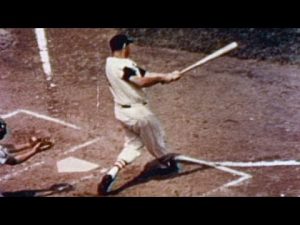
Lasting Legacy
Williams was a proponent of hitting fly balls and being selective at the plate. The modern “fly ball revolution,” as it’s been termed, can be traced back to Ted Williams. Wade Boggs was interviewed in the film and gave an interesting ode to Teddy Ballgame. Boggs was struggling his senior season. He then read Ted Williams book, “The Science of Hitting.” After reading that book, Boggs batted .485 the rest of the season and was drafted by the Red Sox.
When Williams was inducted into the Hall of Fame in 1966, he included in his speech notes about great Negro League players and why he hoped to see them join him in the Baseball Hall of Fame. The people at the Hall of Fame saw these notes ahead of time and asked him not to read them when he spoke. However, Williams didn’t listen. He championed the great Negro League players during his induction speech and within a few years, some of them were elected.

Ted Williams giving his Hall of Fame speech in 1966.
Personal Life
The documentary covered what a difficult person Williams was to live with. He didn’t treat his wives very well, he wasn’t a tenderly parent, and he mostly did his own thing. However, it also showed what a good person he could be. The most touching part of the film was the stories of visiting sick kids at the hospital. Teddy Ballgame refused to allow the press acknowledge his presence at these visits, which speaks to his true character. Williams always donated generously to the Jimmy Fund and visited the sick children. There was one story in particular that stood out; one day when visiting a sick child, the child gripped Ted’s finger and wouldn’t let go. Instead of forcing himself away, Williams had a nurse pull up a cot for him and he stayed by the child’s side, letting the child hold his finger until he fell asleep.
Working off of that, Williams would often go to fellow retired ballplayers, asking for donations to the Jimmy Fund. If one happened to be down on their luck, Williams would ask that they just write a ten dollar check. Once he had the check, Williams would take the account numbers from the check and have $1000 deposited into their account.
An Odd Interview
There was a peculiar moment caught on camera with Ted Williams’ daughter, Cindy. An interview with her on many topics was included in several instances of the film. She always looked into the camera, answering questions and telling stories. However, when asked about and then discussing Ted Williams “wanting” to be frozen, she never looked at the camera. The whole time she spoke, she gazed downward at the table and at her hands. It certainly gave one pause. Could there be an untold story here?
Overall Grade
The documentary was as enlightening as it was entertaining. While much of the famed folklore was recounted, some interesting glances into Williams’ personal psychic were also allowed. For any Red Sox fan, it’s a must-see. For any baseball fans, it’s a must see. Once again, the story of the greatest hitter who ever lived has been brought back to life.
Final Grade: 4.5/5 stars
